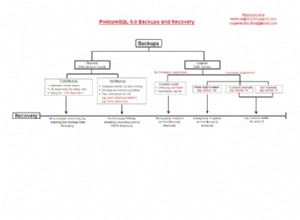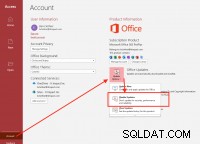Potrzebujesz czegoś takiego - opartego na zestawie rozwiązanie, które uwzględnia to w UPDATE oświadczenie, być może aktualizujesz wiele wierszy na raz, dlatego wyzwalacz musi również radzić sobie z wieloma wierszami w Inserted i Deleted tabele.
CREATE TRIGGER [dbo].[updateUserId]
ON [dbo].[User_TB]
FOR UPDATE
AS
-- update the "Break" table - find the rows based on the *old* User_Id
-- from the "Deleted" pseudo table, and set it to the *new* User_Id
-- from the "Inserted" pseudo table
SET User_Id = i.User_Id
FROM Inserted i
INNER JOIN Deleted d ON i.TID = d.TID
WHERE
Break_TB.User_Id = d.User_Id
-- update the "Log" table - find the rows based on the *old* User_Id
-- from the "Deleted" pseudo table, and set it to the *new* User_Id
-- from the "Inserted" pseudo table
UPDATE Break_TB
SET User_Id = i.User_Id
FROM Inserted i
INNER JOIN Deleted d ON i.TID = d.TID
WHERE
Break_TB.User_Id = d.User_Id
Ten kod zakłada że TID kolumna w User_TB tabela jest kluczem podstawowym który pozostaje taki sam podczas aktualizacji (abym mógł połączyć "stare" wartości z Deleted pseudotabela z "nowymi" wartościami po aktualizacji, przechowywana w Inserted pseudotabela)




